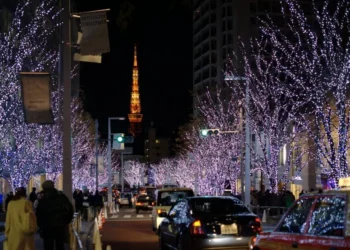No products in the cart.
Cruising with Style: Lowrider Culture in Japan
Introduction
Lowrider culture in Japan, a vibrant and distinctive expression of automotive artistry. In Japan, enthusiasts have embraced this unique subculture, infusing it with their own creative flair while honoring its roots in Chicano communities of the United States. In this blog, we delve into the world of lowrider culture in Japan, exploring its history, influences, and the passionate individuals who keep it alive. In recent years, the visibility of lowrider culture in Japan has surged, attracting attention from mainstream media and art institutions. The fusion of Japanese aesthetics with the traditional elements of lowriding has resulted in truly unique and captivating automotive creations. As lowrider events and exhibitions gain traction across the country, more people are becoming fascinated by the craftsmanship and innovation within the community.
Origins of Lowrider Culture
Lowrider culture traces its origins to the streets of 1940s and 1950s Southern California, where Mexican-American communities transformed ordinary automobiles into rolling works of art. The term “lowrider” refers to vehicles customized to have a lowered chassis, often fitted with hydraulic or airbag suspension systems that allow the car to bounce and dance with rhythm.
Adoption and Evolution in Japan
In the 1980s, Japanese car enthusiasts became captivated by lowrider culture, drawn to its unique style and potential for self-expression. Initially inspired by American films and magazines that showcased the lowrider lifestyle, they began forming their own communities and organizing events dedicated to this culture. As they immersed themselves in the lowrider scene, Japanese enthusiasts embraced not only its visual appeal but also its core values of individuality and self-expression. The integration of lowrider aesthetics into Japanese car customization represented a blend of cultural influences and a celebration of diversity.
Over time, Japanese lowrider enthusiasts introduced their own innovations and interpretations, enriching the global lowrider culture. The growth of lowrider culture in Japan highlights the power of cultural exchange and the universal appeal of artistic expression through automotive design. As this movement continues to evolve, its influence extends beyond the streets, impacting trends in fashion, music, and popular culture worldwide.
The Lowrider Scene in Japan Today
Today, Japan boasts a thriving lowrider scene, with clubs and enthusiasts spread across the country. From Tokyo to Osaka, these aficionados gather at car shows, cruises, and events to display their meticulously crafted vehicles and share their passion for lowrider culture. In recent years, Japan’s lowrider community has not only embraced the classic American aesthetic but also infused it with unique Japanese flair, incorporating elements of traditional Japanese art and design into their customizations. The attention to detail extends beyond just the cars themselves; many enthusiasts meticulously curate their attire and even their hairstyles to reflect the lowrider lifestyle authentically.

Hydraulics and Suspension
One of the defining features of a lowrider is its hydraulic or airbag suspension system, which allows the vehicle to raise, lower, and tilt with precision. Hydraulic setups, often controlled by switches or buttons, enable lowriders to perform mesmerizing maneuvers, including bouncing, hopping, and three-wheel motion. These hydraulic systems not only serve as a functional enhancement but also as a form of artistic expression. The choreography of hydraulics in lowriders is often synchronized to music, creating a mesmerizing spectacle at car shows and events. The intricate dance of a lowrider’s suspension system reflects the skill and creativity of its builder, captivating audiences with its fluid motions and rhythmic precision. Beyond their aesthetic appeal, hydraulic setups require meticulous engineering and tuning to ensure reliability and safety, showcasing the technical expertise of the lowrider community.
Challenges and Recognition
While lowrider culture in Japan continues to thrive, it has also faced its share of challenges. Legal restrictions on vehicle modifications, noise ordinances, and societal perceptions of car customization present hurdles for enthusiasts. Despite these challenges, the dedication of lowrider aficionados persists, fueled by their love for the culture and the desire to preserve its legacy. In response to legal constraints, many lowrider enthusiasts in Japan have become advocates for policy changes, lobbying for regulations that accommodate their passion while ensuring safety and environmental responsibility. Some clubs and organizations actively engage with local authorities and communities to foster understanding and promote responsible car modification practices. Despite the obstacles, the resilience of lowrider culture in Japan shines through, with enthusiasts finding innovative ways to overcome challenges and keep their passion alive.
Conclusion
In the vibrant world of Japan’s automotive subcultures, lowrider culture stands out as a symbol of creativity, craftsmanship, and community. Originating in California and now thriving in Japan, lowrider culture captivates enthusiasts and inspires new generations. As time passes, the legacy of lowriders endures, cruising with style and leaving a lasting impact on Japan’s streets and beyond. The passion for lowriders in Japan reflects a broader cultural fascination with customization and attention to detail. In a society that values craftsmanship and precision, lowrider enthusiasts find an ideal outlet for their creativity. As Japan’s lowrider scene continues to evolve and innovate, it testifies to the universal appeal of automotive culture and the power of shared passions to cross cultural boundaries.









